Best cloud management software
Cloud management platforms for hybrid clouds


The best cloud management software platforms (CMP) make it easier to manage cloud services and reduce costs and overheads.
This is especially important given that cloud software is fast becoming an essential component in any business IT environment, with the ability to manage and run applications through a SaaS model, or set up and manage your cloud architecture with a IaaS or PaaS platform.
The best cloud management software platforms
However, for those who need enterprise-level cloud computing services it often pays to work with different cloud services and providers and put them together in a hybrid cloud, run through a cloud management software platform. This makes it easier for general IT management as well as monitor performance and control endpoint security more easily, as well as reduce costs.
This also means having more choice over which cloud services you want to use, not least from AWS, Azure, and others. Additionally, major integrations are usually available with VMware, Citrix, and other often essential computing applications.
Managing so many different services and providers though can become a headache without the right cloud management software or services to help configure different applications and custom IT needs.
Therefore various cloud management solutions have become available, where you can directly aim to manage cloud architecture directly, or else bring in different cloud services under a single third-party for simpler management.
Ultimately, the cloud management software you choose will allow for greater personalisation for the demands of your businesses, ensuring that the software fits your needs, rather than the other way around.
Here then are the best in cloud management software.
The best cloud management software available right now
1. OpenStack
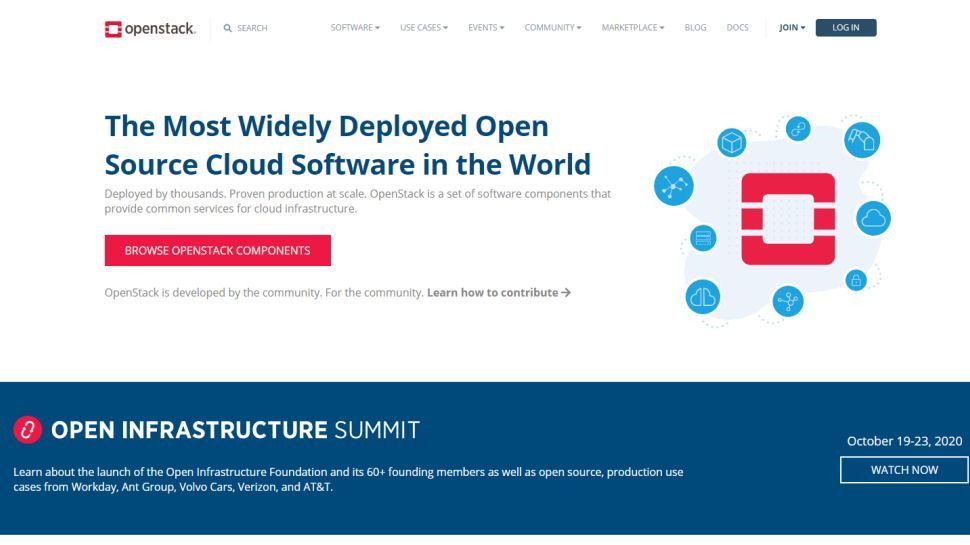
The popular open source cloud management platform
REASONS TO BUY
- Free and open source
- Supports heterogeneous networks
- Automate pools of resources
OpenStack is a free and open source software platform for cloud computing. It is usually deployed as an infrastructure as a service (Iaas).
The software is designed for creating private and public clouds. Users can control compute, storage and networking resources throughout a data centre. This is managed from either a dashboard or through OpenStack’s API.
OpenStack Compute (NOVA) is a cloud computing fabric controller which is designed to manage and automate pools of resources. It works with bare metal configurations, virtual machines and containers. It integrates with legacy systems and third-party technologies.
OpenStack Identity (Keystone) is a directory of users linked to accessible OpenStack services. Keystone supports multiple forms of authentication such as password credentials and web service logins.
OpenStack works with many open source technologies. This makes it suitable for heterogeneous networks. The platform can automate all important processes such as workload provisioning, application lifecycle, networking, storage and container infrastructure.
2. Apache CloudStack
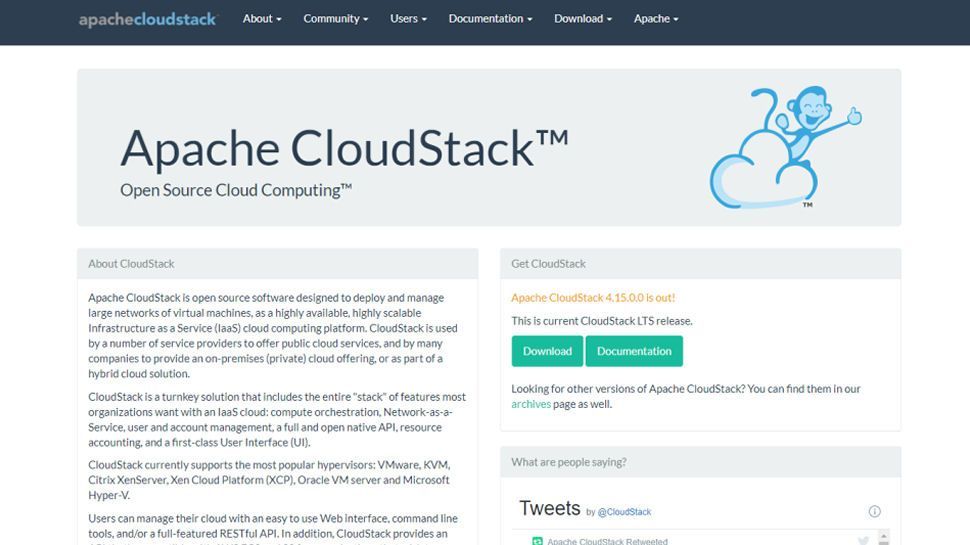
Apache's open source cloud management software
REASONS TO BUY
- AWS E2 compatible
- Free and open source
REASONS TO AVOID
- Not entirely customisable
Apache CloudStack is an open-sourced cloud computing company which creates, manages and deploys infrastructure cloud services.
The software is designed as highly scalable Infrastructure as a Service. The cloud platform is used to deploy and manage large networks of virtual machines. It’s designed for use by companies which offer on-premise cloud or hybrid solutions.
Apache CloudStack supports VMware, KVM and Citrix XenServer amongst others. It is a turnkey solution which includes compute orchestration, Network as a Service, account management, open API and resource accounting.
Users manage their cloud through a user-friendly interface. This gives users access to command line tools and/or RESTful API. Users utilise all compute, networking, software and storage resources from the API.
CloudStack’s API is compatible with AWS EC2 and S3. This is a handy feature for those who wish to deploy hybrid clouds.
The platform controls storage for instances running on hypervisors (primary storage) as well as templates, snapshots and ISO images (secondary storage).
Users have noted that CloudStack is not entirely customizable compared to other open source providers.
3. CloudHealth
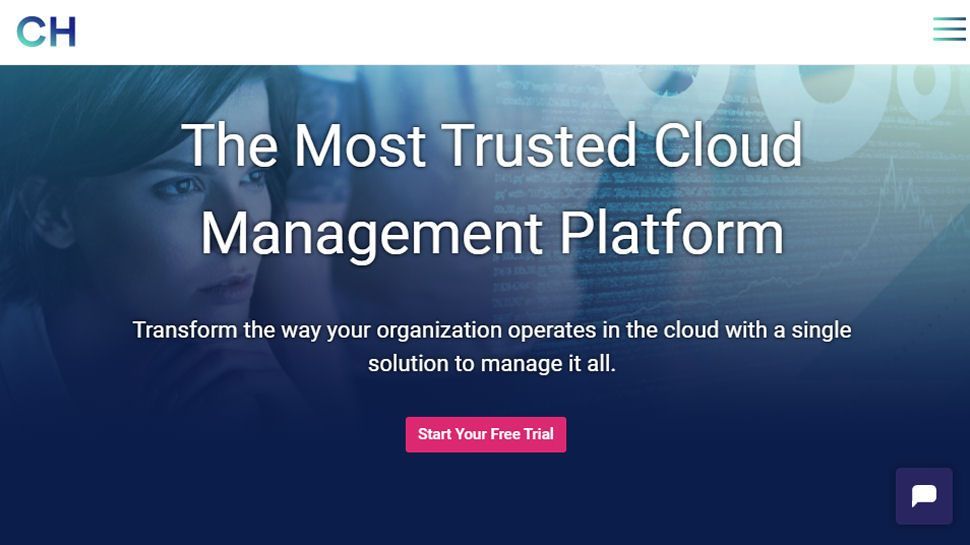
Hybrid cloud management platform from VMware
REASONS TO BUY
- Avoid hidden costs
- Plan for budgets
- Security and compliance
CloudHealth is virtualisation giant VMware's latest software platform aimed at managing hybrid cloud services for enterprises.
The platform covers a number of key areas, such as multi-platform visibility which provides all the reporting and data analytics you need through a customized dashboard. This allows you to see what resources are being used on a department, team, and individual level, so that these can be reallocated to reduce costs as necessary.
You can almost monitor overall costs to identify all costs, as well as discover trends so you can plan ahead to budget according growth models.
Security, compliance, and governance are also built in to ensure you can protect your data and users according to strict and developing policies, to avoid being caught out by a data breach or other leak.
VMware also provide CloudHealth with approved partner cloud services to help build and manage your clouds with exactly what you need, to ensure full compatibility, cost oversight, and security.
4. Scalr CMP
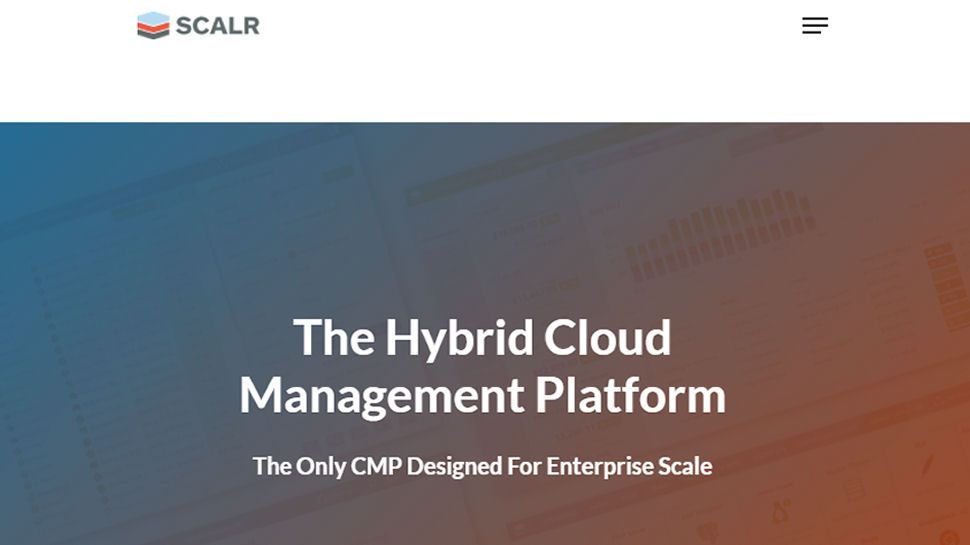
Cloud management platform designed for scale
REASONS TO BUY
- Avoid vendor lock-in
- Simplified self-service
- Standardisation to reduce costs
Scalr CMP provides a hybrid cloud management platform designed specifically for enterprises that aims to allow you to build a cloud strategy that doesn't compromise on security, cost, or productivity.
This means a self-service approach to cloud management that allows for modular infrastructure with agility while keeping costs down. Cost-effectiveness is driven by automation and standardised application deployments. The aim is to satisfy not just DevOps and security but also finance departments.
Budgeting tools and reports make it easier to manage financial policy and responsibility, and sprawl prevention is built in to prevent spend on unnecessary services.
However, everything is run through a dashboard that aims to simplify the user experience, with a single user interface and single API all that's required for managing multiple cloud platforms.
Another key point is that Scalr aims to avoid vendor lock-in by encouraging policies that encourages integration with existing systems rather than buying into proprietary software.
5. BMC Multi-Cloud Management
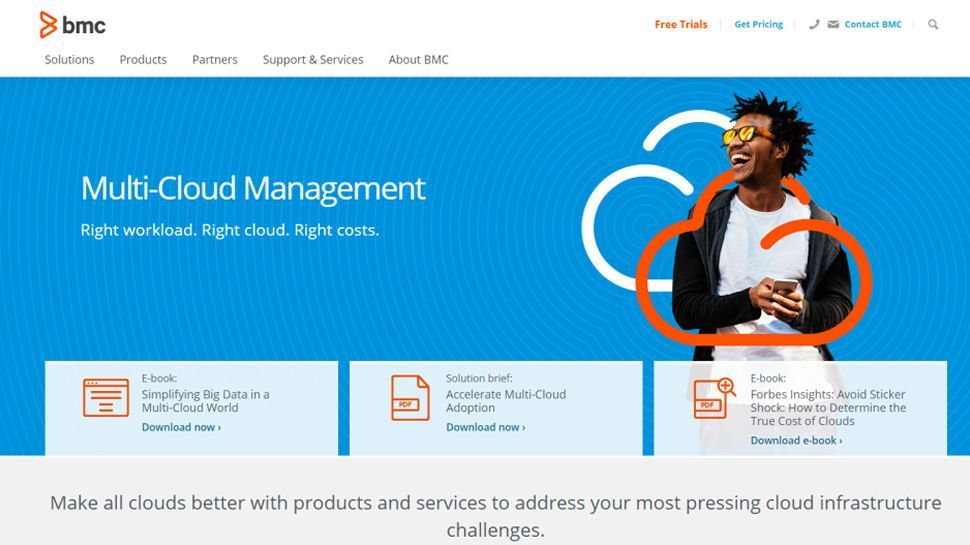
Making cloud management easy
REASONS TO BUY
- Multi-cloud migration
- Asset mapping
- Manage and monitor
BMC Multi-Cloud Management provides automated provisioning, governance, and management of secure cloud services. The platform provides self-service access to deploy applications tacks across multiple cloud environments. The entire system is intended to be simple to set up, with easy streamlining to run applications in either a test or production environment.
BMC Multi-Cloud Management allows users to manage multiple clouds in a range of different ways. For example, there are features for cloud migration services, forecasting costs, as well as predictive service management.
Other features include multi-cloud visibility by mapping hybrid assets alongside the automation of dependency mapping. Automation management continues through workloads, workflows, and DevOps.
There's also monitoring of your clouds across hybrid environments, from which you can manage the performance of your apps to ensure a good user experience, while also allowing you to rapidly determine any problems quickly and easily.
Other cloud management software to consider
MultiCloud provides a dashboard through a web application for managing files across multiple clouds. MultiCloud offers a directory tree that works like Windows Explorer, making it easy to transfer files into different locations. You can also sync different clouds and leave the process to run automatically. There's a Freeware plan available, and a Premium one with more features.
DivvyCloud offers a product more focused on managing security, compliance, and governance in cloud environments. It does this through a single interface which allows management and active policy enforcement over multiple clouds, whether public or private, and is compatible with AWS, Azure, Google, Alibaba, and Kubernetes, among others.
Red Hat Cloudforms uses open source technology to provide management tools for virtual and private cloud infrastructure, which allows for automation of standard processes, visualisations for analysis, compliance control and user self-service abilities. It also aims to make it easier to manage diverse IT infrastructure with a focus on virtualisation, along with deploying containers in the cloud to maximise efficiency.
Get the ITPro daily newsletter
Sign up today and you will receive a free copy of our Future Focus 2025 report - the leading guidance on AI, cybersecurity and other IT challenges as per 700+ senior executives
Brian has over 30 years publishing experience as a writer and editor across a range of computing, technology, and marketing titles. He has been interviewed multiple times for the BBC and been a speaker at international conferences. His specialty is Software as a Service (SaaS) applications, covering everything from office suites to IT service tools. He is also a science fiction and fantasy author, published as Brian G Turner.
-
 Bigger salaries, more burnout: Is the CISO role in crisis?
Bigger salaries, more burnout: Is the CISO role in crisis?In-depth CISOs are more stressed than ever before – but why is this and what can be done?
By Kate O'Flaherty Published
-
 Cheap cyber crime kits can be bought on the dark web for less than $25
Cheap cyber crime kits can be bought on the dark web for less than $25News Research from NordVPN shows phishing kits are now widely available on the dark web and via messaging apps like Telegram, and are often selling for less than $25.
By Emma Woollacott Published